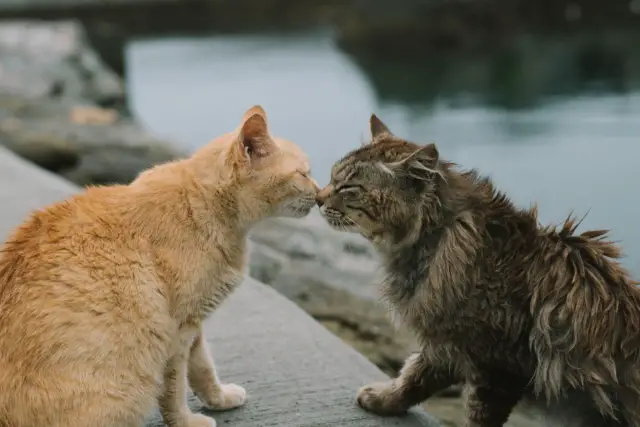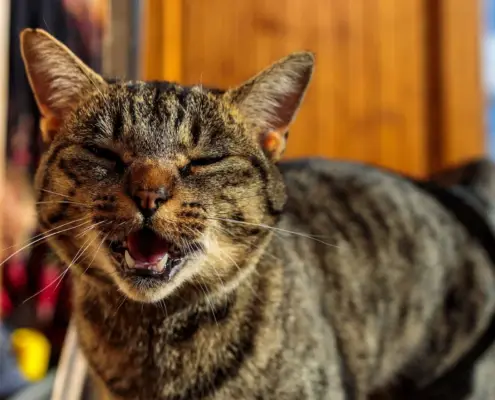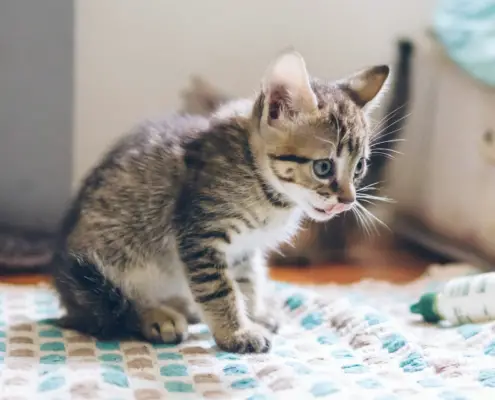Feline grooming is an intriguing behavior that has captivated the curiosity of cat lovers for centuries. From domestic cats to their wild counterparts, grooming plays a vital role in their lives. This article will delve into the depths of this behavior, exploring the reasons why cats groom each other and unraveling the secrets behind this fascinating phenomenon.

Understanding the instinctual behavior of cats
To comprehend why cats groom each other, it is essential to understand their instinctual nature. Cats are solitary animals by nature, and grooming is an instinctive behavior that helps them maintain cleanliness and regulate body temperature. However, this behavior extends beyond self-grooming when it comes to interactions between cats.
The purpose of grooming in the feline world
Grooming serves multiple purposes in the feline world. Firstly, it helps cats to establish a sense of familiarity and belonging within their social group. By grooming each other, cats exchange scents, creating a shared scent profile that marks them as part of the same group. This helps to strengthen their bond and establish a social hierarchy.
Bonding and social hierarchy through grooming
Grooming is not just about cleanliness; it is a means of communication and bonding between cats. When cats groom each other, they engage in an intimate act that fosters trust and strengthens their social bond. It is a way for cats to express affection and establish their place within the social hierarchy. The grooming process also helps to distribute natural oils throughout the cat’s fur, keeping it healthy and shiny.
Grooming as a means of communication
Cats are highly communicative animals, and grooming plays a significant role in their communication repertoire. Through grooming, cats convey various messages to each other. For example, when a dominant cat grooms a subordinate cat, it signifies their authority and acts as a reminder of the social hierarchy. Additionally, grooming can also be a sign of submission, as a subordinate cat may groom a dominant cat as a gesture of deference.
Factors that influence cats grooming each other
Several factors influence cats grooming each other. The most significant factor is their social structure. In multi-cat households or in feral cat colonies, grooming is more prevalent as cats form close-knit social groups. The presence of a strong social hierarchy also plays a role, as dominant cats often initiate grooming sessions with their subordinates. Additionally, cats that are closely related, such as siblings or mother and offspring, are more likely to engage in grooming behavior.
The role of grooming in maintaining hygiene and health
Apart from its social and communicative functions, grooming plays a crucial role in maintaining a cat’s hygiene and health. Cats are meticulous groomers, and by grooming each other, they help to remove dirt, debris, and parasites from their fur. This collective grooming effort ensures that all members of the group stay clean and free from external parasites. Additionally, grooming helps to stimulate blood circulation and exfoliate dead skin cells, promoting a healthy coat and skin.
Grooming behavior in different cat populations
Grooming behavior can vary among different cat populations. Domestic cats, for instance, have adapted their grooming behavior to suit their living environment. They may engage in more frequent grooming sessions due to the close proximity of their social group. On the other hand, wild cats such as lions and tigers exhibit less grooming behavior as they have larger territories and less social interaction. However, even in these solitary species, grooming still occurs between family members or mating pairs.
Common misconceptions about feline grooming
There are several common misconceptions about feline grooming that need to be addressed. One misconception is that cats groom each other solely for cleanliness purposes. While cleanliness is a factor, grooming serves a broader range of functions, including social bonding and communication. Another misconception is that excessive grooming is always a sign of a problem. While excessive grooming can indicate an underlying issue, such as stress or skin allergies, it is essential to consider other factors before jumping to conclusions.
The complex and fascinating world of feline grooming
In conclusion, the behavior of feline grooming is a complex and fascinating aspect of cat behavior. Cats groom each other not only for cleanliness but also to establish social bonds, communicate, and maintain a healthy coat. Understanding the reasons behind this behavior allows us to gain a deeper appreciation for the intricate social dynamics within the feline world. So, the next time you witness cats grooming each other, remember that there is more to it than meets the eye.
If you enjoyed my article, I would appreciate you sharing it with your network.

Sima Ndlebe
Sima writes for CatBuzz. He is interested in Cats, Health and Fitness, and Entrepreneurship.
Published: 24 January 2024



